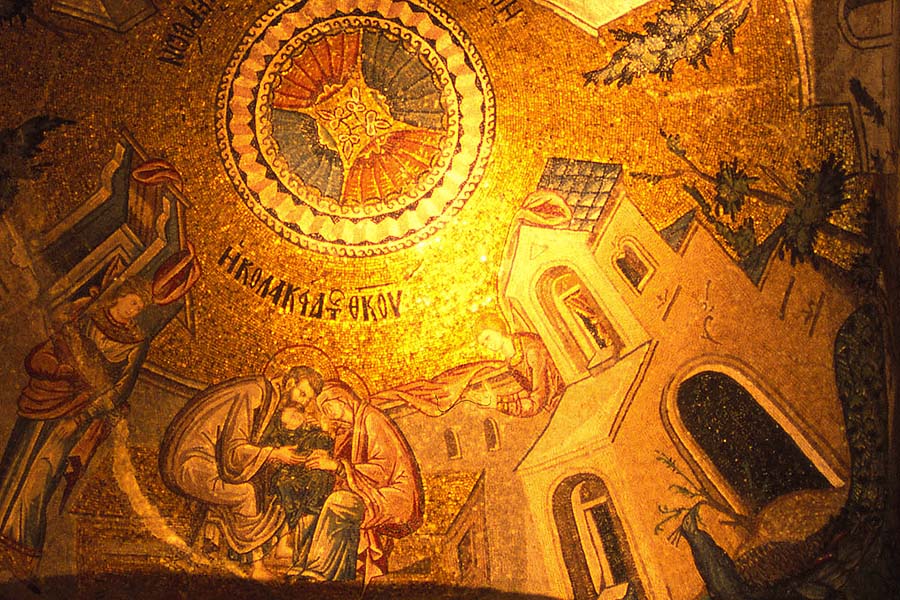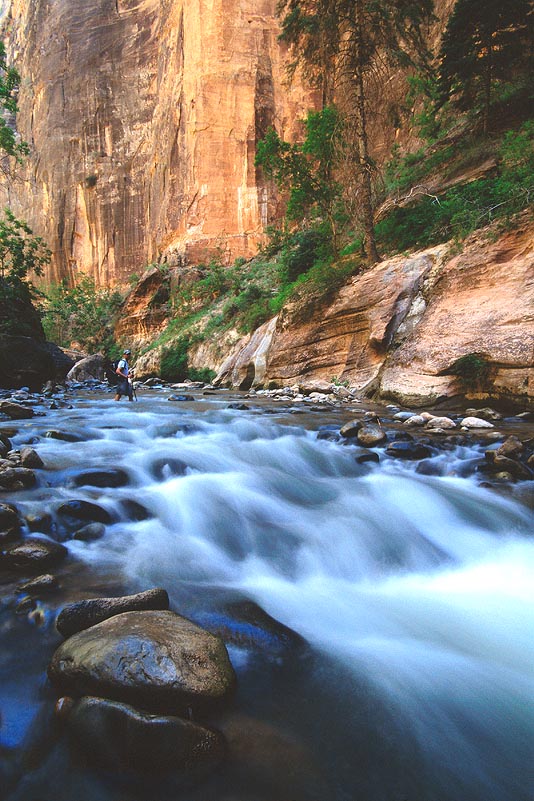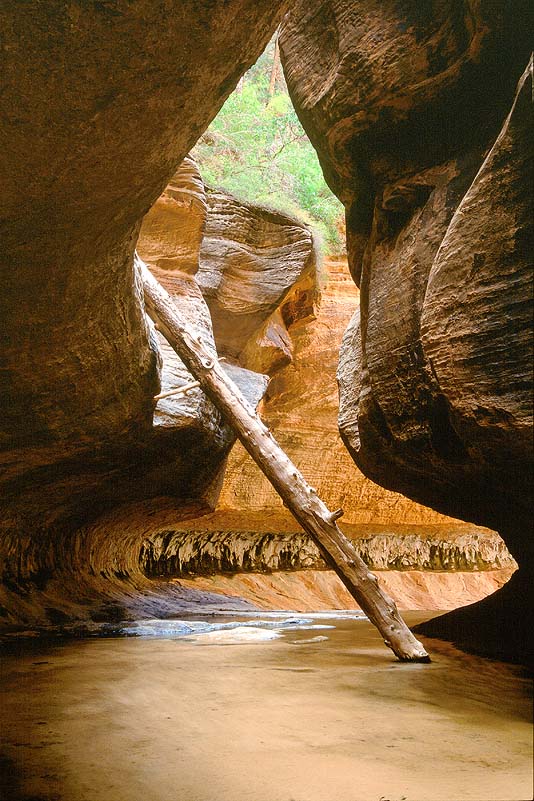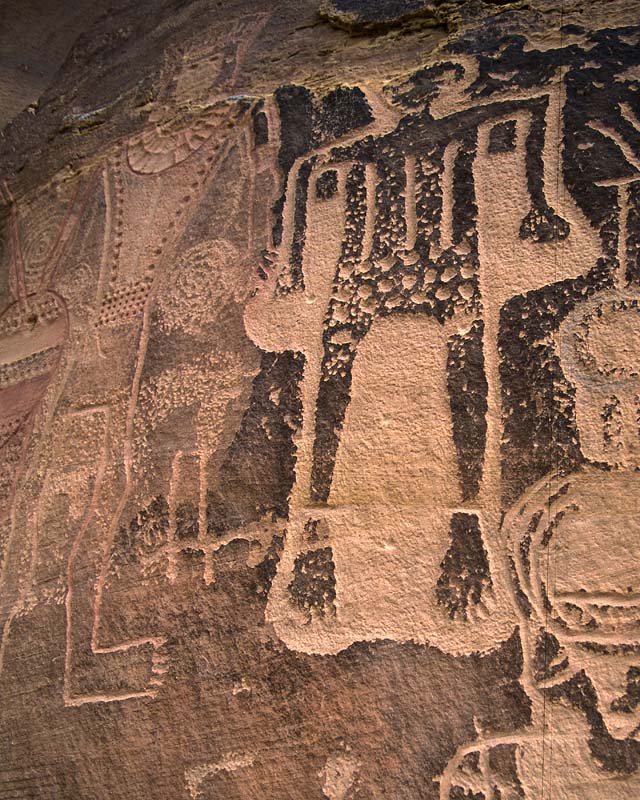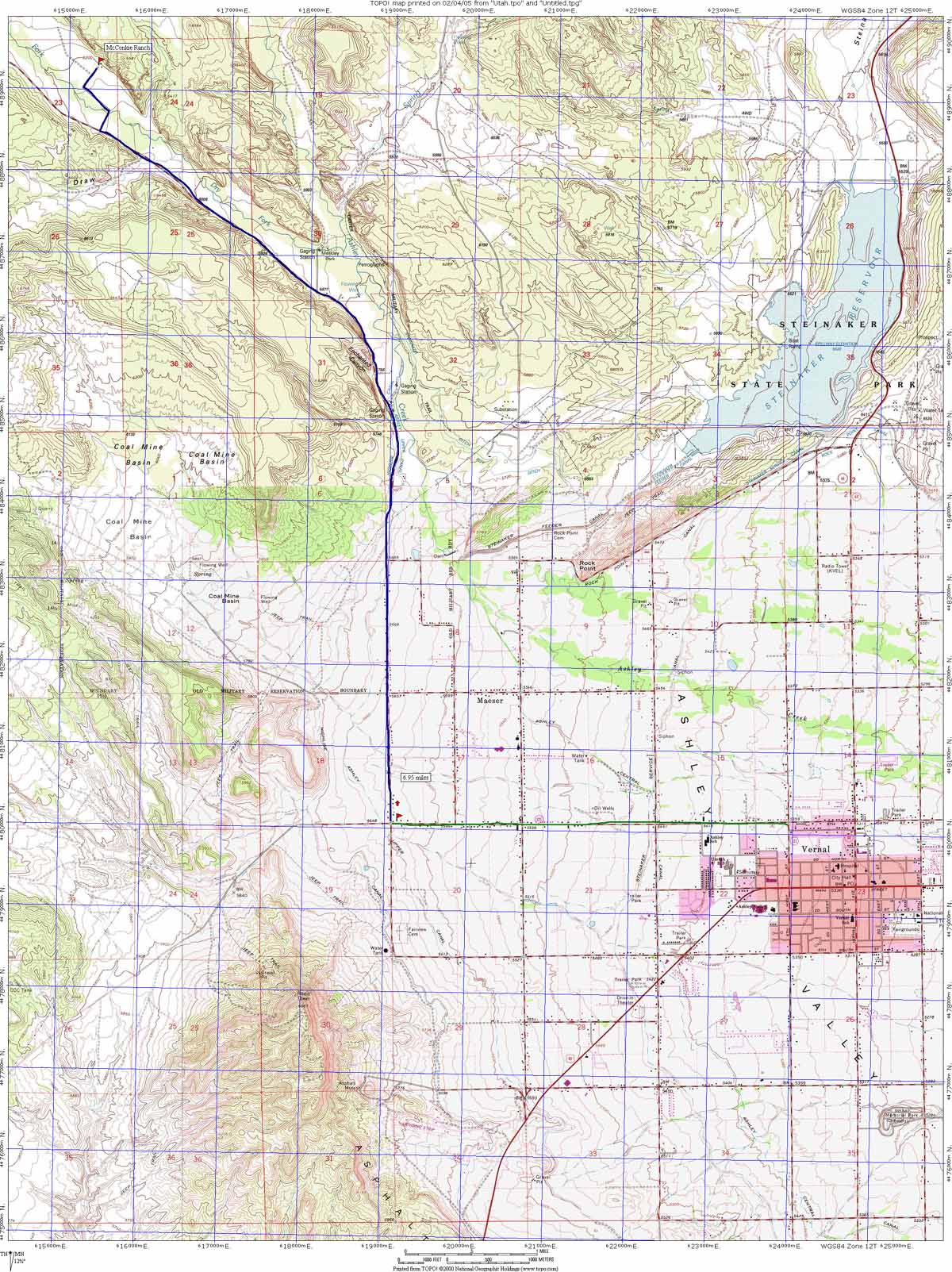Travel and Adventure Photos: Istanbul, Zion, Grand Canyon, and Rock Art
Got some pictures scanned - thought all y'alls might be interested in.
1. Istanbul, Turkey - Byzantine Mosaics
2. Zion - some Narrows, some Subway
3. Fremont Rock Art at McConkie Ranch, Vernal Utah
4. Deer Creek Canyon, Grand Canyon NP, Arizona
Byzantine Mosaics, Istanbul Turkey
The city of Byzantium was founded in 667 B.C. by Byzas the Magerian on the western (European) shore of the Sea of Marmara. It was taken over by the Emperor Constantine in 330 A.D. - to move the seat of the empire away from the decadent and dangerous Rome—and renamed Nova Roma, but it really became known as Constantinople, or "Constantine's City". With the great political split of the Empire in 395 A.D., it became the seat of the Eastern Empire. Emperor Justinian built the incredible Hagia Sophia in 537, currently the 4th largest cathedral in the world (though no longer consecrated).
Mosaic on Byzantine Church ceiling, Istanbul
Detail of Mosaic
With the final split of the Eastern and Western churches in 1054 AD, Constantinople became the seat of the Eastern Church and the capitol of the Byzantine Empire. Overrun by various parties from time to time, the city was a center of religion and art for hundreds of years. Byzantine paintings and mosaics were among the most advanced in the time period 1000 AD to 1400 AD.
After many seiges, Constantinople fell to Mehmet the Conquerer in 1453 AD and the city was renamed Istanbul and became the capitol of the Ottoman Empire and the seat of the Caliphate. The many churches were converted to mosques and the beautiful mosaics depicting the saints were covered over with plaster, since depictions of humans was prohibited in islamic art. This turns out to be a boon to the modern world, as much of the art of the period was preserved under the plaster.
Mosaic
With the founding of the modern Turkish secular state after WWI, Mustafa Kemal Ataturk converted the mosques that were converted from churches into museums (in large part to stop the bickering between the Christians and Moslems over which they should be). In recent times, a project has begun to remove the plaster and restore the amazing mosaics from their 600 year sleep under the plaster. These pictures are from a small church (now museum) that is in process.
More History: Wikipedia Byzantine Empire, Instanbul City History
Mosaic
Zion National Park - Summer 2004
Hiking in the Narrows
Log in The Subway
Fremont Artwork, McConkie Ranch, Vernal Utah
There is a whole bunch of really interesting Fremont-culture rock art up on the McConkie Ranch in Vernal. Here’s a small selection.
This panel is all innies – just a trick of the light that they look like outies.
King and Skeleton
Directions to McConkie Ranch
Drive to Vernal.
From Highway 40, turn North on 5th West, then turn Left (West) on 5th North.
Follow 5th North 3.0 miles. Turn right (N) on the road to Dry Fork (signed).
Drive about 7 miles north on the Dry Fork Road. McConkie Ranch is on the right, with the main house below an impressive arch in the rock. Turn Right and follow signs to the parking lot.
The art is on the walls above the ranch. The trails are up in the talus and a little rough, but pretty easy. The Walls face south and west.
Deer Creek Falls, Grand Canyon
Top of the Deer Creek Falls
Bottom of Deer Creek Falls



